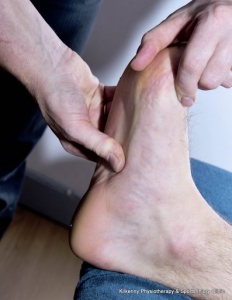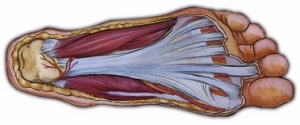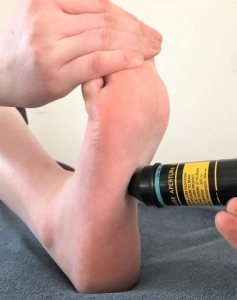What is Plantar Fasciitis and how do you treat it?
Plantar fasciitis refers to pain in the sole, arch and heel of the foot. There are a wide range of treatment approaches, but an in-depth assessment is essential to ensure you get the correct treatment.
The fascia is a strong band of connective tissue which links the heel to the toes and supports the long arch in the foot. When it becomes strained, overused or damaged it is usually referred to as plantar fasciitis. It is not a ligament, tendon or muscle, and so does not respond to treatment in the same way as these structures would.
The term plantar fasciitis is technically incorrect because “itis” refers to inflammation of that organ or structure. In few cases of foot pain, is there actually an inflammatory process at work, and hence this type of pain does not usually respond well to anti-inflammatory medication.
We prefer to use the term plantar fasciiopathy, as “opathy” as a suffix on any word means a disorder of, and that is a more correct term for most foot pains.
Symptoms of Plantar Fasciitis / Plantar Fasciiopathy
- Pain in arch of foot or heel
- Worse after rest or first thing in morning but loosens out after a few steps
- Loosens out but worsens again as the day goes on
- Worse after prolonged standing, walking, running
What Causes Plantar fasciitis / plantar fasciopathy
The causes of plantar fasciopathy are usually biomechanical in origin.
- Flat feet or high arches
- Tight calves
- Standing a lot at work
- Unaccustomed activity
- Wearing sloppy shoes or slip ons (flip flops)
- Obesity
Treatment for Plantar Fasciitis / Plantar fasciopathy
In our clinic we believe you need to do a detailed assessment to identify the main factors causing the plantar fasci-itis/opathy. Only then can you properly address them. This involves doing a thorough biomechanical assessment.
Treatment will then be geared towards:
- Treating the pain using electrotherapy and soft tissue release or massage
- Ultrasound
- Vibration therapy
- Stretching or releasing all tight structures eg: the plantar fascia, calves, hip flexors
- Strengthening weak muscles
- Correcting any biomechanical deviations
- Providing Orthotics
- Footwear advice
- Gait re-education
As with any pain relating to overuse or poor biomechanical alignment, it is essential that you not only get relief of pain, but you also address the causative factors, so that the condition will not recur.




